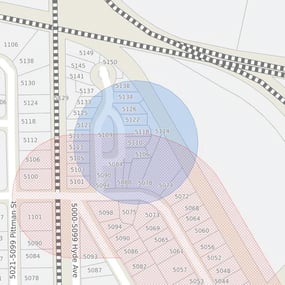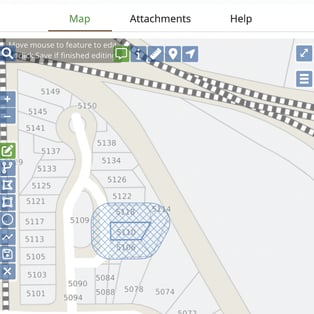
We often do not fully appreciate things until we have lost them. We have come to expect and rely upon power, water, internet access, and other services without even thinking about them. Yet, these are constantly at risk, and many lose their access on a daily basis through no fault of their own. As professionals in the utility and damage prevention sectors know all too well, protecting infrastructure directly implicates both public safety and the access to services that communities rely upon.
The United States is at a record high for excavation incidents damaging buried infrastructure. The risk is so significant that the Common Ground Alliance (CGA) has expressed the need for “systemic” reforms since 2020 – well before the passage of over $1 trillion in federal infrastructure spending. Given the strong correlation between construction spending and excavation damage, this is all but certain to increase excavation damage over the next decade.
On the precipice of a new wave of damages, CGA recently issued an industry challenge to cut damages by half over the next five years. This inspiring call to action is also an implicit recognition of how dire the situation truly is. But damage numbers have risen for a decade even as new technology and best practices arose, so how can we simply reverse course and prevent a quarter million damages when we haven’t done so before?
Leveraging the System and Elevating the System
The stated goal of “damage prevention” is self-evident: to prevent damage. This has always been a collaborative process, and its multi-party nature signals that the solution cannot be individualistic. We won’t cut damages in half by adherence to best practices by single stakeholders alone. The solutions must be systemic.
This will necessarily mean embracing the systems already in place to ensure all parties are using them to their full potential, but also improving how they work.
According to the Infrastructure Protection Coalition, $61 billion in annual waste and loss occurs before any tools go into the ground. Inefficiency in the system is its own problem and likely contributes to eventual damage events, which cause over $30 billion in annual economic harm.
The ecosystem must be streamlined on the front end to improve communication between all parties before any digging takes place. That is where damage prevention happens.
Four Reforms
Certain reforms can be adopted almost overnight that individually will significantly reduce costs and prevent damage. Taken together, they are all but certain to cut damage numbers in half – if done systemically. These needed reforms include:
• Broad shift to web-entry tickets
• Improved ticket scheduling and prioritization options
• Systemic use of electronic white-lining
• Systemic use of enhanced positive response
These reforms happen at the One Call center and are systemic by definition, because they impact all parties using the platform.
Web-Entry Tickets
To maximize benefits and minimize costs, centers should continue directing excavators to click rather than call 811. Excavators directly entering information can lead to more accurate site and proposed excavation descriptions (depending on who submits the requests) and may reduce no-notification damages by incentivizing excavators to request locates in a more streamlined process.
In Canada, repeated analysis demonstrates that relative to notice made by calling, direct online notice led to half the total damages. (Said differently, evaluating known damages when notice was given, call-ins resulted in twice the damage number as web-entry.) This is attributable to clearer and more precise delineations. While this difference is between a population entirely made up of excavators who did give notice, it is nevertheless a critical finding to explore and reform to implement. If cutting damage in half is the goal, this moves the industry in the right direction.
Ticket Scheduling and Prioritization
Combining this with a reform to allow ticket scheduling and prioritization must also be explored across the country as a systemic reform implemented at the One Call level. Scheduling and prioritization – which can be more easily communicated through web-entry – will go a long way in improving efficiency and reducing burdens on locators, which affect the timeliness and accuracy of locates. It can also reduce the potential for repeat locate requests if an excavator calls in tickets for a largescale project but will only complete work on a portion within the ticket window.
This small give and take between excavators and locators that One Calls can help facilitate can improve overall communication and collaboration among stakeholders. Allowing possible paid priority tickets may also be worth exploring for excavators on tight schedules.
Electronic White-Lining
Piloted, studied, and promoted by PHMSA since 2007, electronic white-lining is a pre-dig process that has benefits for every stakeholder. It has been shown to significantly improve cost savings and has direct benefit for preventing excavation damage. This is why CGA calls for this as the first step in the ideal dig of the future. But it must be available and promoted for every dig through One Call centers today. Without electronic white-lining, web-entry tickets are less effective, but together, they help narrow the dig site, improve clarity, reduced repeated/unnecessary site visits, and limit over-notification.
Enhanced Positive Response
In 2014, a pilot program demonstrated a 67 percent reduction in excavation damage when an enhanced positive response was supplied. Three years later, PHMSA completed a study and reported to Congress that its number one recommendation for improving the damage prevention ecosystem was to implement enhanced positive response. This CGA best practice was proclaimed as the second step in the ideal dig of the future. As a modest evolution to electronic positive response and ticket check systems, enhanced positive response offers the ability to send digital photos, ticket information, virtual manifests, and even facility maps to excavators through the One Call center as attachments or hyperlinks. Enabling excavators to cross-reference their site markings with high-quality enhanced digital information on their mobile devices is common sense and should become standard practice facilitated through every One Call center in the country.
While electronic white-lining and enhanced positive response will help reduce damage, they also provide unique post-damage benefits by preserving a digital record of the proposed excavation site and markings. Because excavation work disrupts the site, investigators and lawyers may leverage these records to understand root causes or liability. Fortunately, the use of these practices should eliminate the need for most such investigations, but this key backstop to the process can help improve data quality, streamline investigations, and better align stakeholder incentives.
All four of these reforms take place before the dig. These are all components of the system that ensure robust and clear communication between and among stakeholders so that maximum clarity about the presence and location of buried facilities is known by all relevant stakeholders before any tool breaks ground. By front-loading communication with technological best practices, the eventual excavation will be safe and efficient.
These four reforms – if adopted systemically – will begin a shift that will affect other behaviors and streamline inefficiencies with a certain damage reduction impact. Without these components, there is no clear path to substantial reduction in damage, including the admirable goal to see 50 percent reduction in only five years.

![ESM Sidebar Ad[87] ESM Sidebar Ad[87]](https://excavationsafetyalliance.com/hubfs/ESM%20Sidebar%20Ad%5B87%5D.gif)



Comments